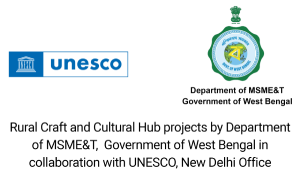Banbibir Pala is a mythology-based folk theatre (Jatra) form that uses several characters, dialogues, songs and a range of musical instruments to narrate the story. It has its origins in the man-animal conflict in the Sunderbans, one of the world’s largest mangrove forests. The story goes like this: The local goddess, Banbibi, saves a child named 'Dukhe' from tigers after he is offered as a sacrifice by Dhana, a trader from Bangladesh. The trader does this to appease Dakshin Rai, the god of the tigers so that he can collect honey from the forest without any hindrance. While the duration varies from three to four hours, the dialogues are in the local dialect, songs in the Bhatiyali folk form and the music is composed with dhol, tabla and cymbals as well as keyboards.
Particularly in South 24 Parganas, the folk art was under threat after the devastation caused by Aila in the year 2009. Migration of the local people led to almost extinction of the art form. It has regained little ground since. Now, there is a larger flow of tourists, including foreigners, in South 24 Parganas that helps the artists there to earn significantly more than their counterparts in the North 24 Parganas district.
Total 374 folk artists in two districts South 24 Parganas and North 24 Parganas are under the RCCH II initiative.



